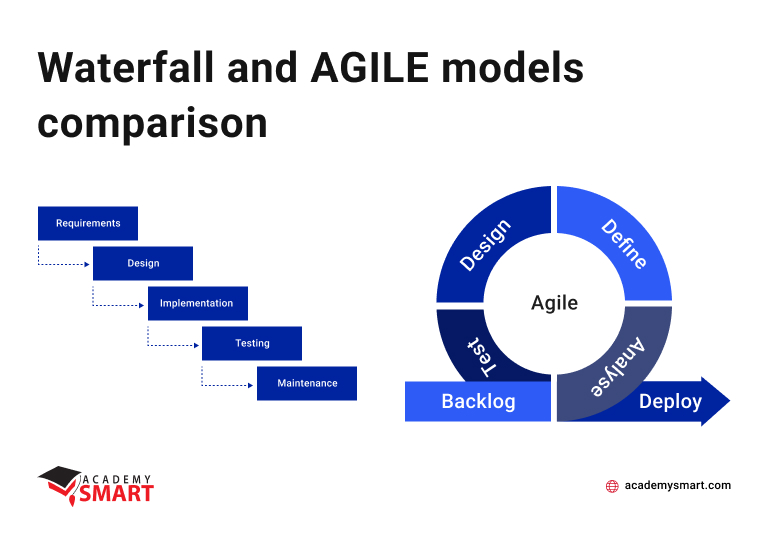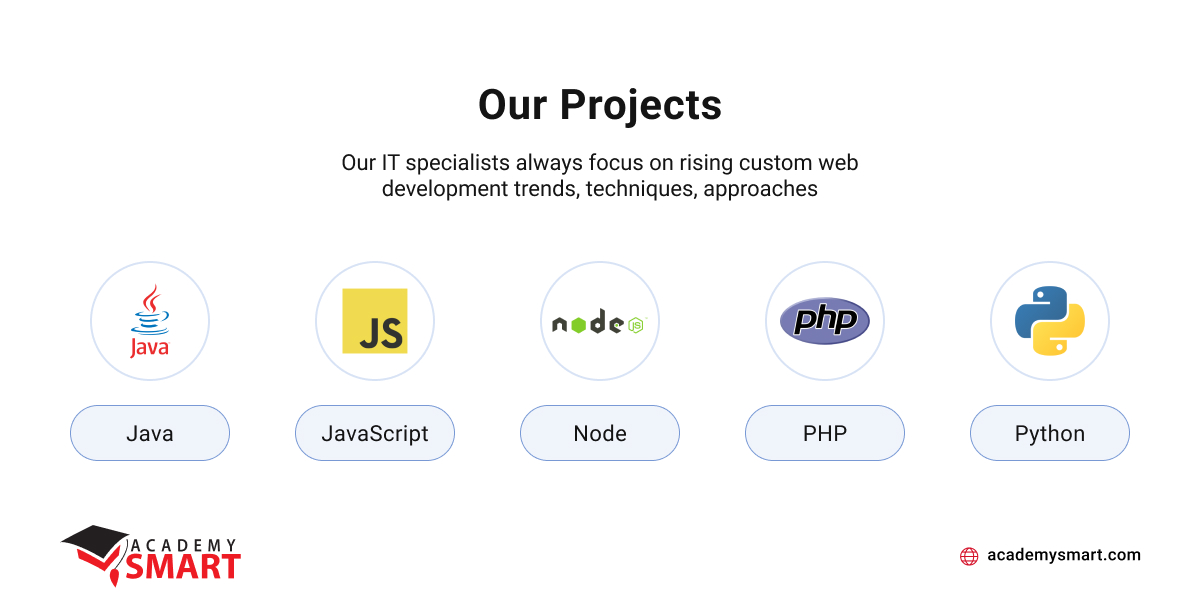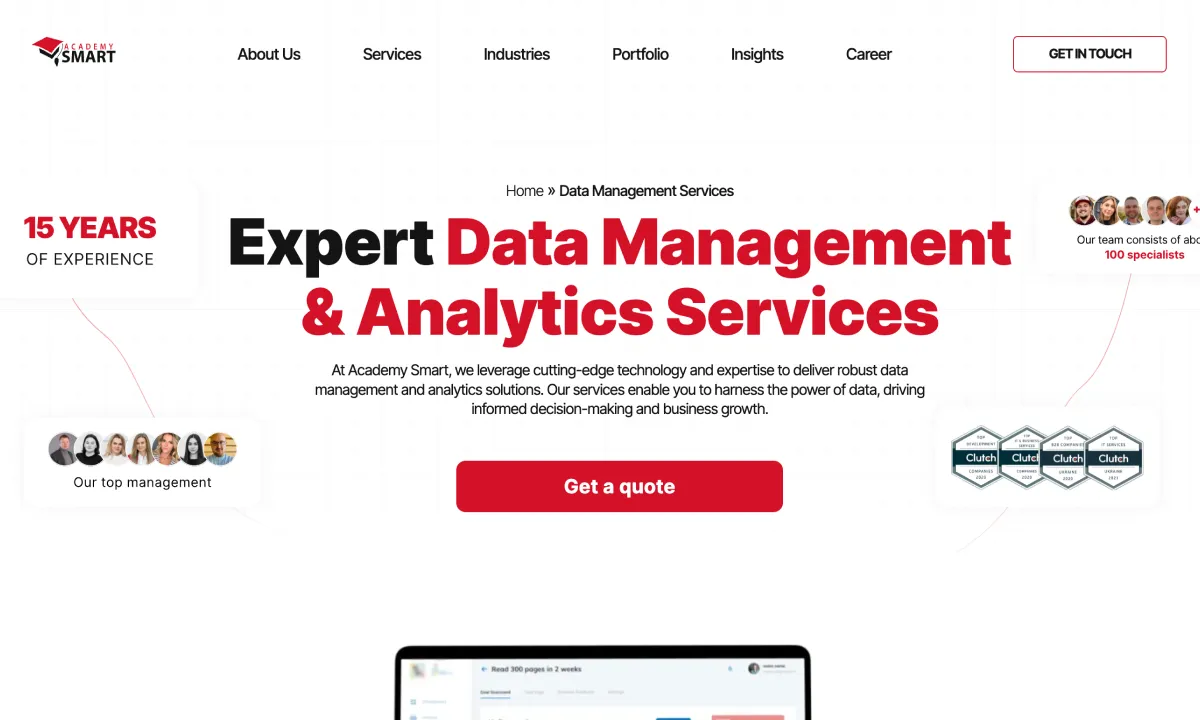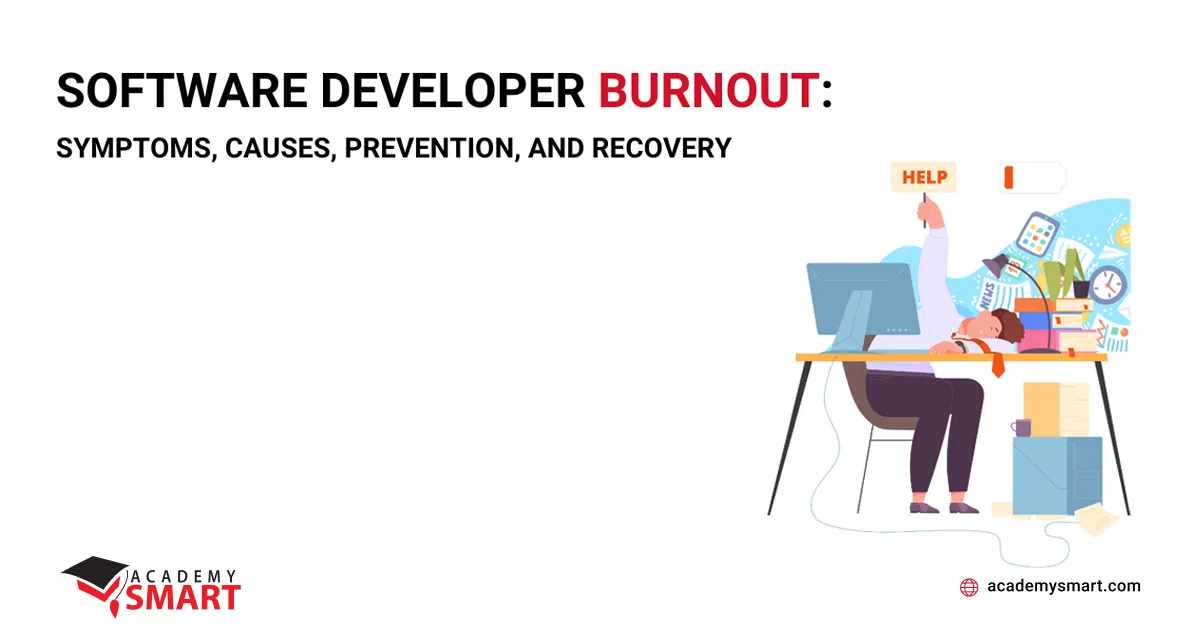
Agile Software Development Life Cycle: Process, Methodology and Phases Explanation
Contents
For over 20 years, Agile methodology and its principles have facilitated a more streamlined and efficient approach to building software applications. However, despite Agile project management becoming the standard workflow for many European and American developers, its traits and benefits may still not be evident and understandable to many customers. This article aims to clarify the specifics of applying Agile to the software development life cycle process and demonstrate its advantages over traditional development approaches.
What is Agile Model in Software Engineering
Application development methodologies have evolved in response to the ever-growing complexities of software projects. Initially, software development followed a predominantly sequential and rigid path known as the Waterfall. In the Waterfall model, each app-building phase — such as requirements gathering, design, coding, testing, and deployment — followed the other consecutively, with little room for change once a stage had begun.
However, as software projects became more intricate and dynamic, it became apparent that the Waterfall model’s inflexibility could lead to problems such as missed requirements, late-stage changes, and lengthy development cycles. The Agile software development concept emerged in response to these challenges, focusing on flexibility, collaboration, and customer-centricity.
Key principles of Agile methodology
Unlike the Waterfall model’s linear progression, Agile embraces an iterative and incremental approach. It breaks the development process into smaller, manageable cycles called iterations or sprints, resulting in a potentially shippable product gain every time. This approach allows for early and regular releases, enabling rapid adaptation to changing requirements.
The Agile methodology is underpinned by a set of fundamental principles that guide its strategy for managing projects and delivering software.
- Agile champions the significance of people and their interactions within the development process over the rigid confines of procedures and tools. It acknowledges that harnessing team members’ collective expertise and collaboration leads to innovation and success.
- In the Agile lexicon, functional software takes precedence over exhaustive documentation. Agile advocates for the swift delivery of tangible software that adds value to the end-users, recognizing that it is in the hands-on experience that proper validation occurs.
- Agile is marked by a commitment to customer collaboration, eschewing rigid contract negotiations. The iterative nature of Agile allows for continuous feedback from customers, ensuring the alignment of the product with their evolving needs.
- Agile thrives on its ability to respond to change, prioritizing adaptability over adherence to a predetermined plan. It acknowledges that change is an inherent aspect of app development and is poised to pivot when needed swiftly.
These four cardinal principles are succinctly encapsulated in the slogan: “We prioritize individuals and interactions, working software, customer collaboration, and responsiveness to change.” Beyond these foundational tenets, Agile methodology espouses additional principles that are equally important:
- Agile development teams recognize the importance of maintaining a sustainable pace that safeguards the well-being of team members while ensuring the delivery of high-quality products.
- The Agile ethos is deeply rooted in an unwavering commitment to continuous improvement. Teams perpetually seek avenues to enhance their processes and product quality.
- A dedication to transparency and openness underscores communication and partnership within Agile teams. That facilitates the exchange of ideas, challenges, and progress.
- Agile software developers believe that collaboration invariably trumps competition. They view joint efforts as more potent and conducive to innovation.
With its adaptable and flexible approach, Agile methodology in software development life cycle is a highly sought-after project management paradigm that finds application across diverse industries and contexts.

Agile vs Waterfall development model
Benefits of Agile software product development process
The Agile methodology is not only defined by its guiding principles but is also renowned for its manifold advantages to software development endeavors. The most indisputable benefits of Agile workflow template are the following:
- Enhanced customer satisfaction
A steadfast devotion to customer satisfaction is at the heart of the Agile method. Agile teams are relentlessly dedicated to delivering functional software early and consistently. This practice serves as a litmus test for ensuring that the product aligns seamlessly with the evolving needs of the client. Through frequent customer engagement and feedback loops, Agile developers keep a finger on the pulse of expectations, thereby fostering an environment where customer fulfillment is principal. - Elevated product quality
The agile process is synonymous with a stubborn pursuit of excellence. By prioritizing working software as the primary measure of progress, Agile teams place a premium on the quality of the product. Continuous testing and feedback mechanisms become integral components of the development process, allowing teams to identify and rectify issues promptly. The result is a product of unparalleled quality, honed and refined iteratively. - Mitigated project risk
The agile approach breaks down complex projects into smaller, more digestible parts. This deliberate decomposition mitigates the inherent risks associated with large-scale projects. By doing so, developers substantially reduce the probability of project failure, ensuring a higher likelihood of success. - Elevated team morale
Agile methodology stands apart by designating teams to be self-organizing and decision-making entities. This empowerment fosters a sense of ownership and autonomy among team members. Team morale soars with the latitude to make decisions that impact the project. This heightened confidence, in turn, kindles a surge in productivity, creating a virtuous cycle of engagement and achievement.
The agile procedure optimizes the software development process and heralds a cultural shift in how teams cooperate and innovate. It is more than just a methodology; it is a transformative force driving excellence in software engineering. That is how user-friendly, productive, and functional enterprise software applications are created, like those presented in the Academy Smart’s promo video.
Agile frameworks and tools for software development
Development teams may operate various frameworks to implement Agile practices, manage projects efficiently, and deliver high-quality software quickly. There are several famous examples:
- Scrum provides a structured approach to product development with defined roles (Scrum Master, Product Owner, Development Team), events (Sprint, Daily Scrum), and artifacts (Product Backlog, Sprint Backlog).
- Kanban is an Agile framework that visualizes work on a Kanban board. It’s beneficial for managing work in progress and optimizing flow.
- Scrumban is a hybrid framework that incorporates the predictability of Scrum while responding to changes and adjusting priorities in real time, as facilitated by Kanban’s visual boards and work-in-progress limits.
- Lean principle is often applied in Agile development. It highlights delivering value to customers while minimizing waste. It includes concepts like value stream mapping and continuous improvement.
- Dynamic Systems Development Method emphasizes disciplined delivering projects on time and within budget. DSDM provides a comprehensive framework with defined roles, phases, and principles, making it suitable for projects requiring rigorous governance and compliance.
- The Agile Data Method is tailored explicitly for database and data-oriented development projects. It promotes iterative development of database components, continuous integration of database changes, and database refactorings to maintain data quality.
- Extreme Programming is an Agile methodology utilizing engineering practices like test-driven development, pair programming, and continuous integration.
Feature-driven development focuses on feature-level planning and development, making it suitable for projects with many features. - Scaled Agile Framework is designed for large organizations and complex projects. It raises Agile principles to the enterprise level with roles, ceremonies, and artifacts tailored for wider teams.
- Large-Scale Scrum (LeSS) extends the Scrum framework designed for big organizations and projects. This framework simplifies, streamlines, and reduces unnecessary complexity in large-scale Agile adoption. It promotes a single product backlog and encourages collaboration across multiple Scrum teams working on the same product.
Specialized tools for project management assist software development teams in implementing Agile principles, from managing work items and tracking progress to facilitating collaboration and communication among team members and stakeholders. Among the most popular auxiliary tools, you can find the following ones:
- Jira
- Asana
- Trello
- Monday
- ClickUp
- Confluence
- Wrike
- Pivotal Tracker
- VersionOne
- Planview
- Rally
You may learn more about their feature set and the pros and cons in our article “12 Best AI Project Management Software Tools” earlier in the blog. Of course, the choice of framework and tools depends on the team’s specific needs and the nature of the project.
Agile Software Development Life Cycle: policy and procedures
The Software Development Life Cycle (SDLC) is a systematic approach used in software engineering to design, develop, test, and maintain program systems. It guides the entire software development process from inception to deployment. Typically it consists of the following stages:
- Planning and requirements gathering
At the outset of the SDLC, the planning phase involves defining the project scope, objectives, and requirements. Stakeholders collaborate to establish a clear understanding of what the software should achieve. This phase forms the foundation of the project. - Design
The design phase focuses on transforming the conceptual requirements into a detailed blueprint. It includes defining the software architecture, data structures, user interfaces, and other technical specifications. The goal is to create a clear and comprehensive plan for building the software. - Coding
During the implementation phase, developers write the code according to the design specifications. That is where the software takes shape, and programming languages are used to create the functionality outlined in the design phase. - Testing
Testing is a critical phase of the SDLC, where the software is rigorously evaluated for defects, errors, and functionality issues. Various testing methods, such as unit testing, integration testing, and user acceptance testing, ensure the software meets its requirements and functions as intended. - Deployment and release
Once testing is complete and the software is deemed ready, it is deployed for use by end-users. This phase involves the installation, configuration, and rollout of the software. Continuous monitoring and support are also provided as necessary. - Maintenance
The final phase of the SDLC involves ongoing maintenance, updates, and iterative improvements to the software. Feedback from users and stakeholders is valuable for identifying areas for enhancement or addressing issues that may arise post-release.
The SDLC is not a one-size-fits-all approach; it offers flexibility to adapt to different project types and methodologies. Various SDLC models, such as Waterfall or Agile cater to specific project needs and organizational preferences.
5 phases of agile SDLC process
Considering the above, let’s note that the critical difference between the Waterfall vs Agile SDLC models is the opposite of a linear and sequential approach against iterative and flexible. In other words, the activation of SDLC phases in the Waterfall mainly occurs only once on the path directly from planning to release of the application. What is an agile model in SDLC, then? It reproduces the entire development life cycle in each but shorter iteration approved as part of the planning. This way enables the delivery of functional software at the end of each iteration, allowing for adaptation based on changing factors. Of course, specialized terminology and efficient workflow are used to manage the software development life cycle process flexibly. So, what are the 5 stages of SDLC in an Agile flowchart?
- Conception
The product idea is generated at this stage, and the initial requirements are collected. The product owner and the development team work together to define the product vision and to identify the key features and functionality that the product should have. - Inception
The product vision and roadmap are created here, and the project team is assembled. The product owner and the development team work together to create a detailed plan for building and delivering the product. The roadmap should include the features and functionality that will be included in each iteration, as well as the timeline and budget for the project. - Iteration
The product is developed in a series of short cycles at this phase, called iterations. Each iteration typically lasts 1-2 weeks. The process begins with planning the scope of work that will be completed during the sprint. The team then develops application code, tests it, and delivers it to the customer at the end of the iteration. The customer then provides feedback to utilize it for improvements in the next iteration. - Release
The product is finalized here and released. Once the product is complete and has been approved by the customer, it is launched into production. - Production
It is the stage of product support and maintenance. The development team continues to monitor the app state and fix any bugs that are found. Developers may also add new features and functionality based on feedback from the customer.
The Agile SDLC is an adaptable process that can be used to develop various software products. It is particularly well-suited for developing complex enterprise-level products that require frequent changes.

Agile SDLC components
Agile roadmap creation methodology
Creating a roadmap in Agile SDLC defines a clear and structured plan for the project, ensuring that team members, stakeholders, and customers have a shared understanding of priorities, objectives, and timelines. It helps align efforts, manage expectations, and adapt to changing requirements, ultimately enhancing communication, collaboration, and the successful delivery of valuable software increments.
The specificity of the Agile roadmap creation procedure lies in its adjustable and elastic approach to planning and visualizing the development journey of a software project.
Agile roadmaps are not fixed documents but evolve iteratively. They focus on short- to mid-term planning, typically a few months to a year, allowing teams to adjust their course based on changing priorities and feedback. Agile roadmaps embrace change and uncertainty. They are designed to accommodate new requirements, shifting priorities, and unforeseen challenges, allowing teams to pivot as needed.
Agile roadmaps focus on desired outcomes and impact rather than just output. They align with the project’s strategic goals and the broader vision of the product. They emphasize incremental and frequent releases of working software. That allows teams to gather real-world feedback and validate assumptions, leading to better-informed decisions. Moreover, agile SDLC roadmaps are subject to regular review and adjustment. Developers conduct frequent retrospectives to assess progress, identify areas for improvement, and refine the workflow accordingly.
Agile roadmaps are often presented visually, using tools like Kanban boards or Gantt charts. This visual representation provides a clear overview of the project’s progress and upcoming milestones, encouraging collaboration between cross-functional teams, including developers, designers, testers, and product managers. As they prioritize delivering value to end-users, Agile roadmaps are transparent and accessible to all stakeholders. That fosters cooperation, alignment, and shared understanding among team members, product owners, and customers.
To create an Agile software development life cycle roadmap, developers usually have to:
-
- Gather input from stakeholders
Talk to the people who will be using the product, as well as those who will be responsible for developing and maintaining it. Get their input on the product vision, strategy, and roadmap. - Prioritize the functionality
Not all features and functionality are created equal. Some parts are more critical than others, and some features are more urgent. Prioritize the features and functionality based on their importance and urgency. Selecting and clearly defining SDLC KPIs and their targets will help track the effectiveness of the process at all its stages and iterations. - Estimate the efforts
Once you have prioritized the features and functionality, you need to estimate the effort required to produce each component. It will help you to create a realistic timeline for delivery and allocate the necessary amount of resources. - Create a release plan
The release plan should outline the key features and functionality that will be included in each product release. - Review and update the roadmap
The Agile roadmap is a living document, so it is important to recapitulate and modernize it regularly as the product evolves and new information becomes available.
- Gather input from stakeholders
Here are some tips for creating a practical SDLC roadmap:
- Be realistic
Don’t try to cram too much into each release. Focus on the most essential features and functionality, and be realistic about the time it will take to develop them. - Be flexible
The Agile roadmap is a modifiable document, so be prepared to change it. That could be due to changes in the market, evolutions in the customer’s needs, or technical challenges. Get more relevant knowledge in our guide “Product Development Roadmap: how to Create in 6 Steps.” - Be transparent
Communicate the roadmap to all stakeholders, including customers, developers, and testers. That will help to ensure that everyone is on the same page and understands the project’s goals.
Agile SDLC project management challenges
Agile SDLC methodologies have revolutionized software development, implementing flexibility, customer collaboration, and faster delivery. However, with these benefits come a unique set of challenges PMs must address to ensure successful project outcomes. Here are some of them:
- Changing requirements
Agile welcomes evolving necessities, but managing frequent changes while maintaining project scope and timelines can be challenging. - Team empowerment
Assigning self-organizing teams requires a balance between autonomy and alignment with project goals. - Prioritization
Agile development teams must constantly prioritize features and user stories to ensure that the most valuable items are delivered first. - Estimation accuracy
Agile relies on iterative planning and estimation, which can be complex, leading to overruns or underestimations. - Client engagement
Ensuring continuous client involvement and feedback can be demanding, especially in large or distributed teams.
Navigating these challenges is vital to harnessing the full potential of the Agile SDLC process, allowing developers to build high-quality software apps within project timelines and budgets. Of course, that requires a lot of practical experience; our one is presented on the portfolio page.

Software products we delivered
Why Choose Academy SMART as your Agile Software Development Team
Academy Smart, an offshore IT service provider from Eastern Europe, has practiced the most advanced and reliable Agile principles for enterprise software development for over 13 years. Our programmers, designers, business analysts, and project managers hone their daily skills on projects for our clients across various business sectors, creating user-friendly, efficient, and profitable applications.
Our outstaffing specialists quickly integrate into existing in-house teams, bringing great organizational benefits and valuable expertise. Dedicated teams assembled from our employees work equally effectively as contractors or primary outsourced turnkey software developers. With our participation, custom software application development will be an easier journey for your business. Contact us to share the range of tasks you have.
Agile SDLC Model: Frequently Asked Questions
What Sets Agile Apart from Traditional Waterfall Development?
Agile focuses on iterative development and adaptability, allowing for ongoing adjustments, while Waterfall follows a strict, sequential process with less room for change.
How Can a Business Benefit from Implementing an Agile Development Methodology?
Implementing Agile principles can lead to faster time-to-market, improved collaboration, flexibility to adapt to changes, higher quality, and a customer-centric approach, enhancing the business software project’s success.
Book a free consultation

Reach out to start talking today!












